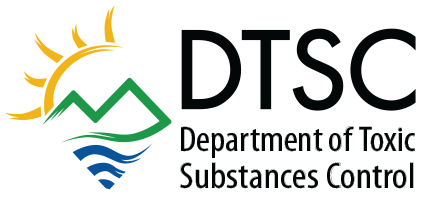Managing Hazardous Waste
A waste is a hazardous waste if it is a listed waste, characteristic waste, used oil and mixed wastes. Specific procedures determine how waste is identified, classified, listed, and delisted. For more information, view our Defining Hazardous Waste web page.
Learn about permits, generators, and transport, storage, and disposal facilities; our emergency response, enforcement, and investigation work; and hazardous waste in the home, office, and marketplace. Get help from DTSC’s Regulatory Assistance Office.
 Where can I find…
Where can I find…
CERTIFIED APPLIANCE RECYCLER PROGRAM
Some components in appliances contain materials that can cause health or environmental problems if not removed and properly managed prior to recycling.
CERTIFIED UNIFIED PROGRAM AGENCIES (CUPA)
CUPA is a consolidation of six environmental programs at the local level. DTSC’s Enforcement & Emergency Response Unit administers the technical implementation of the program and conduct reviews.
ELECTRONIC VERIFICATION QUESTIONNAIRE (eVQ)
The annual Verification Questionnaire and fees assessment for hazardous waste ID numbers and hazardous waste manifests is required by Health & Safety Code section 25205.15 and 25205.16.
ELECTRONIC WASTE (E-WASTE)
Computers, TVs, phones, electronic toys and similar items often contain hazardous materials such as lead, mercury, and cadmium. These products must be disposed of properly when they reach the end of their useful life.
EMERGENCY RESPONSE
DTSC’s Emergency Response Unit responds anywhere in the state to actual and potential releases of hazardous substances that pose an acute threat to public health and/or the environment.
ENFORCEMENT
DTSC’s Enforcement Unit protects people and the environment through core activities, such as, regular inspections of hazardous waste facilities to verify compliance with requirements.
FACILITIES (TSDFs)
Treatment, storage, and disposal facilities (TSDFs) are the final link in the cradle-to-grave chain of custody concept for the safe management of hazardous wastes.
GENERATORS
A generator is any person who produces a hazardous waste, or whose act first causes a hazardous waste to become subject to regulation. Generators must properly characterize (or identify) all their hazardous wastes.
HAZARDOUS WASTE EPA ID NUMBERS
DTSC issues ID numbers to generators, transporters, and disposal facilities. This includes federal EPA ID numbers, and State ID numbers for non-RCRA hazardous waste.
HAZARDOUS WASTE MANIFESTS
A hazardous waste manifest must accompany most hazardous waste that is shipped off site. The manifest is the shipping document that travels with hazardous waste from the point of generation to the final steps.
HAZARDOUS WASTE TRACKING SYSTEM
The Hazardous Waste Tracking System (HWTS) is the Department of Toxic Substances Control’s data repository for hazardous waste Identification (ID) numbers and manifest information.
HOUSEHOLD HAZARDOUS WASTE
Many common household products are hazardous. If these products are handled or disposed of incorrectly, they can pose a threat to human health, animals and the environment.
METAL RECYCLING
Hazardous waste laws and regulations that generally apply to facilities engaged in scrap metal recycling are provided. Scrap metal recycling facilities include feeder yards, dismantlers, and facilities with a metal crusher, baler, or shredder.
OFFICE OF CRIMINAL INVESTIGATIONS
The Office of Criminal Investigations (OCI) is staffed with sworn peace officers with the powers of arrest, search and seizure. In addition, OCI has Hazardous Substances Scientists that work together hand-in-hand with the investigators.
PERMITTING
DTSC’s Permitting Unit protects Californians and the environment from toxic harm by making timely, enforceable, and protective permit decisions for the operation of hazardous waste facilities in accordance with all applicable laws and sound science.
REGULATORY ASSISTANCE OFFICE (RAO)
DTSC’s Regulatory Assistance Program provides regulatory compliance assistance, information, and research services to the generators, transporters, and facilities managing hazardous waste.
RETAIL WASTE
Similar to wastes generated by manufacturing and industrial processes, wastes generated by retail companies that sell consumer products may also be subject to hazardous waste laws and regulations.
TRANSPORTERS
A transporter is a person engaged in the offsite transportation of hazardous waste by air, rail, highway or water. Hazardous waste regulations apply to carriers transporting hazardous waste when that waste is subject to the manifesting requirements.
TOXICS IN PRODUCTS
Get information about reducing, recycling, and properly disposing of products that contain hazardous wastes.
UNIVERSAL WASTE
Universal waste comes from products containing mercury, lead, cadmium and other substances that are hazardous to human health and the environment. These items cannot be discarded in household trash nor disposed of in landfills.
VIOLATIONS SCORING PROCEDURE
Violations Scoring Procedure applies to all operating permitted Treatment Storage Disposal Facilities, except those facilities solely authorized under a post-closure permit or order, or a permit or permit modification for closure only.


 How do I…
How do I…


















